Small Bedroom Decorating Use These Colours For a Spacious Feel
Small Bedroom Decorating? Use These Colours For A Spacious Feel
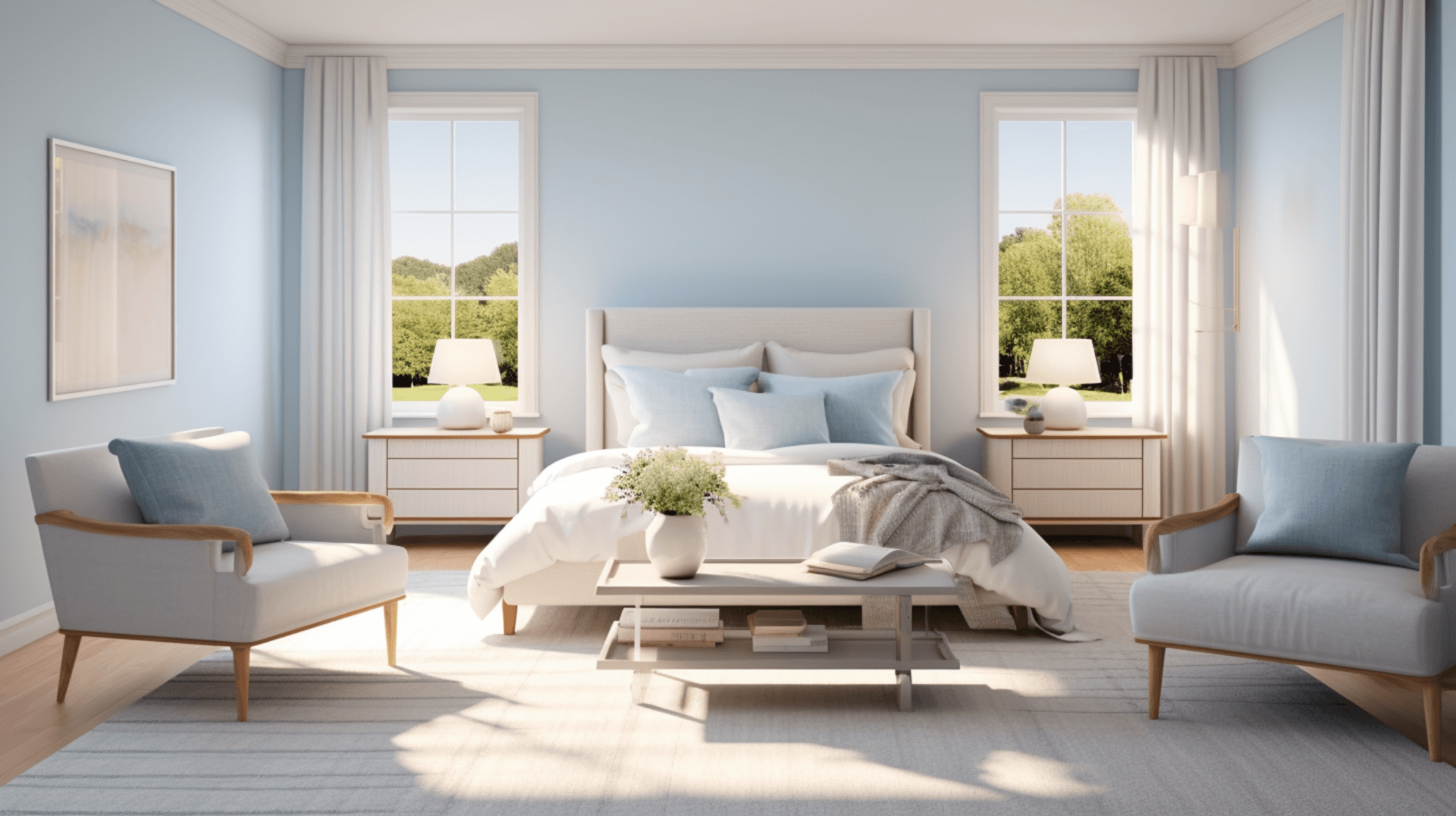
When it comes to decorating a small bedroom, choosing the right colours can make a significant difference in creating a spacious feel. Understanding colour psychology and its impact on the perception of space is essential in this process.
This article aims to provide insights into selecting the appropriate colour palette for small bedrooms. By using light and neutral shades, such as whites, creams, and greys, one can create an illusion of openness and airiness. Cool blues and greens can also contribute to a sense of tranquillity and expansiveness. On the other hand, warm and cosy earth tones can add a sense of comfort and intimacy to the space.
Additionally, incorporating vertical space, using patterns to create illusions, and adding textures can enhance the visual depth of the room. Lastly, personalising the space with meaningful accents can help create a harmonious and inviting atmosphere.
By following these guidelines, individuals can transform their small bedrooms into visually spacious and aesthetically pleasing retreats.
Understanding colour Psychology
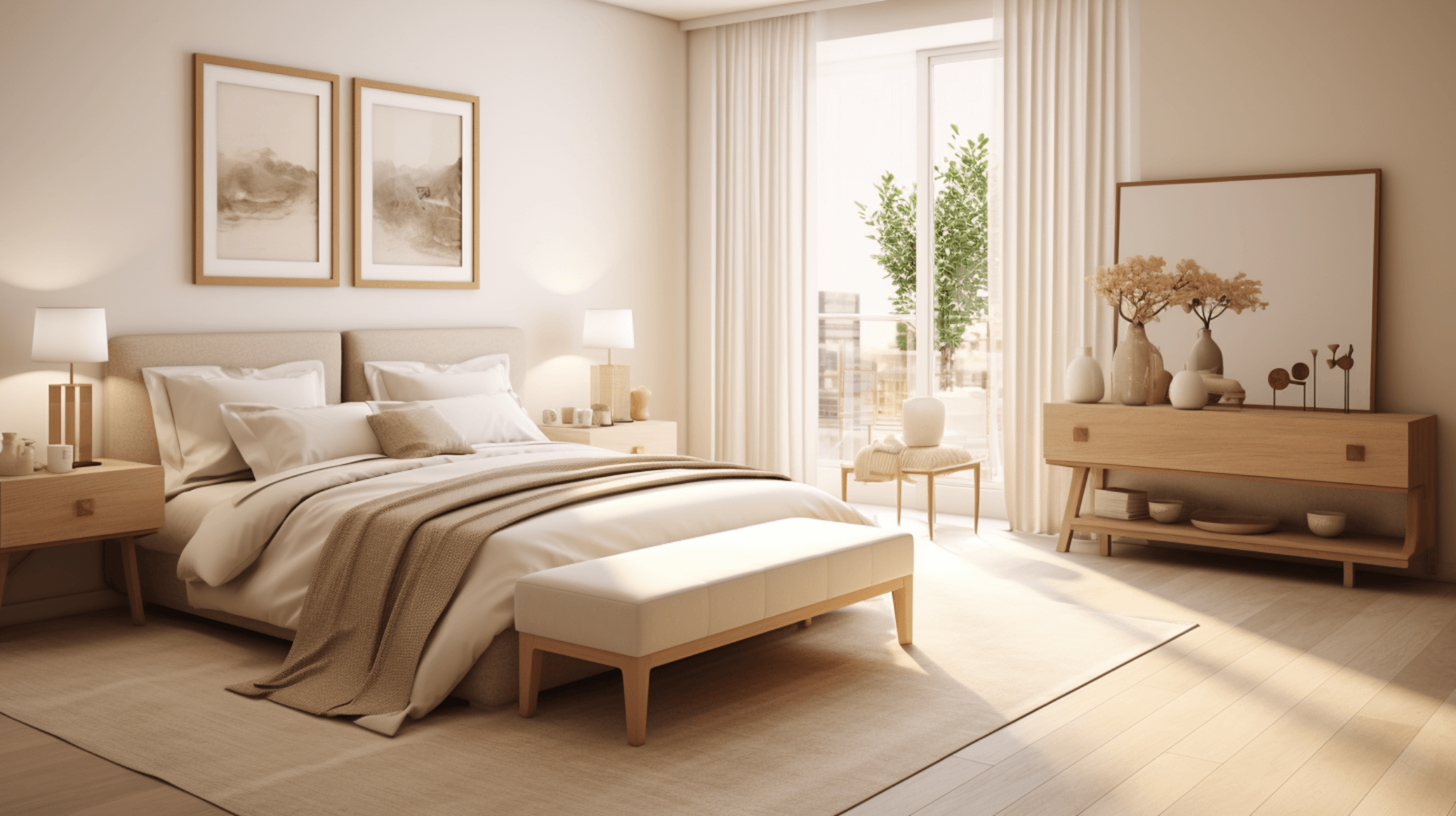
colour psychology plays a significant role in understanding the emotional and psychological impact that colours can have on individuals, influencing their moods and perceptions in various contexts.
colours have the ability to evoke specific emotions and create different atmospheres within a space. For instance, warm colours like red and orange are known to stimulate energy and excitement, while cool colours like blue and green have a calming effect and promote relaxation.
Additionally, different shades and tones of colours can further enhance or alter the emotional response they elicit.
Understanding colour psychology is crucial in interior design, as it allows designers to strategically select colours that align with the desired mood or atmosphere of a room. By applying this knowledge, small bedrooms can be decorated using colours that create a spacious feel and evoke a sense of tranquillity and openness.
Choosing the Right colour Palette
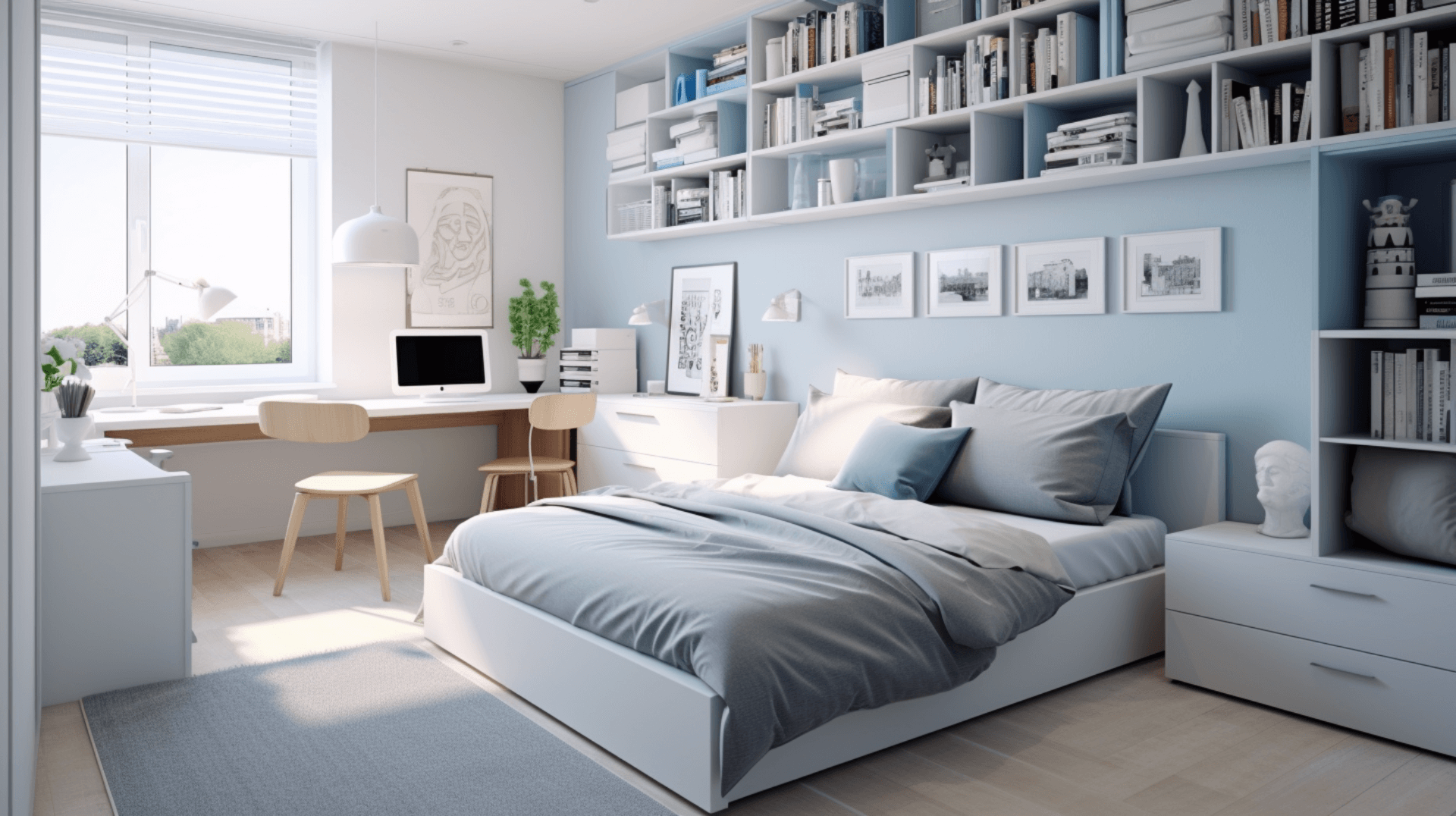
When selecting a colour palette for a bedroom, it is crucial to carefully consider the hues that will create an impression of expansiveness within the space. The right choice of colours can visually enlarge a small bedroom, making it feel more open and airy.
To achieve this effect, it is recommended to use the following colour palette:
-
Light Neutrals: Shades such as white, ivory, or beige reflect light and create a sense of openness.
-
Cool Blues and Greens: These colours have a calming effect and can make a small bedroom feel more spacious.
-
Pale Pastels: Soft shades of pink, lavender, or mint can add a touch of femininity and create a serene atmosphere.
-
Metallic Accents: Incorporating metallic elements like gold or silver can add a touch of glamour and reflect light, making the space appear larger.
By carefully selecting the right colour palette, one can transform a small bedroom into a visually spacious and inviting sanctuary.
Light and Neutral Shades
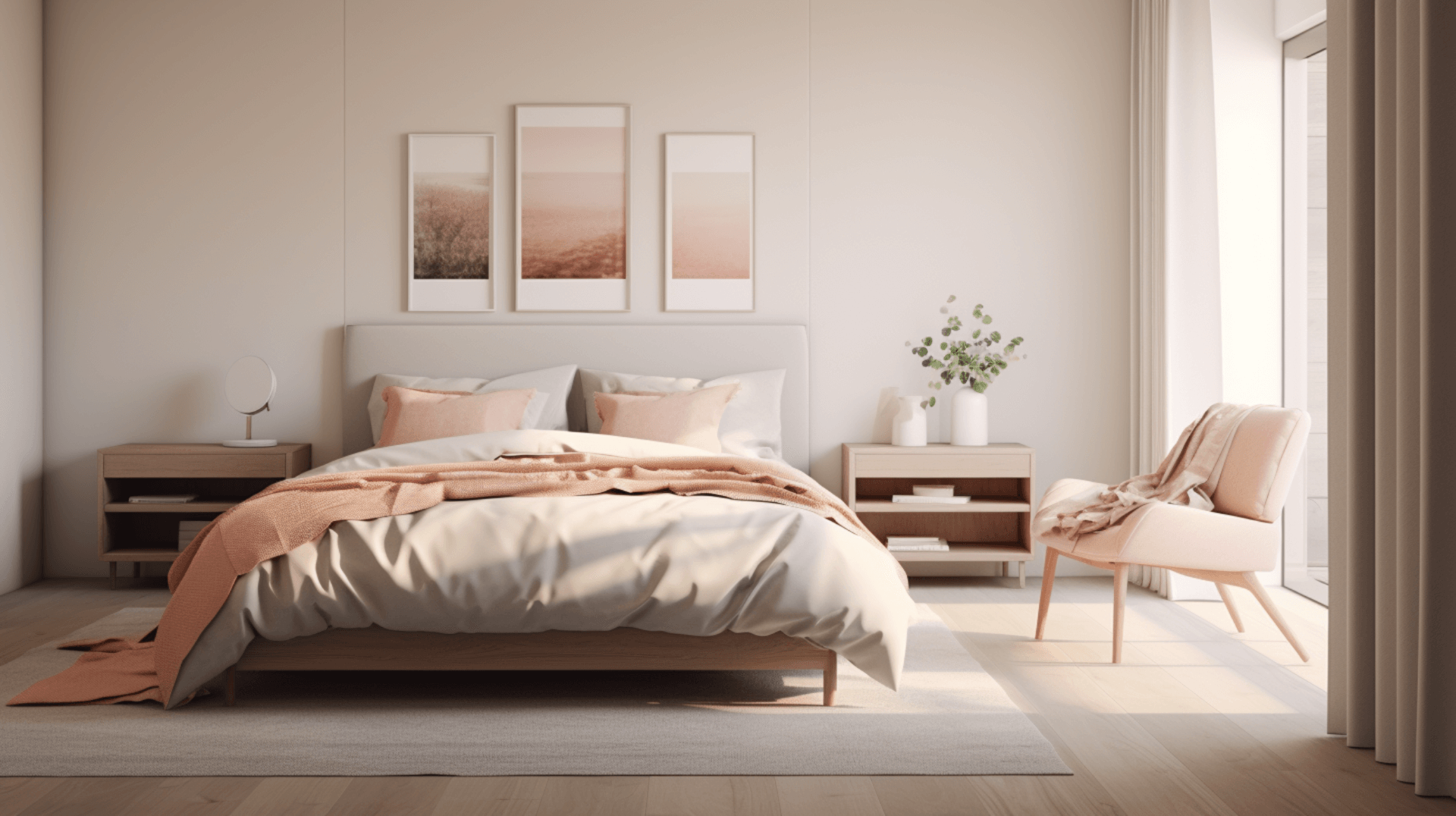
Light and neutral shades can create an illusion of openness and airiness, effectively transforming the ambiance of a bedroom.
By using light colours such as whites, creams, and pastels, the room appears brighter and more spacious. These shades reflect natural light better than darker colours, making the room feel airy and expansive.
Additionally, neutral shades like beige, grey, and taupe provide a calm and soothing atmosphere, promoting relaxation and tranquillity.
The use of light and neutral shades also allows for greater flexibility in terms of decorating and accessorising the room. Furniture, artwork, and textiles can easily be incorporated without overwhelming the space.
Overall, opting for light and neutral shades in a small bedroom can create a visually appealing and spacious feel, enhancing the overall comfort and aesthetic of the room.
Cool Blues and Greens
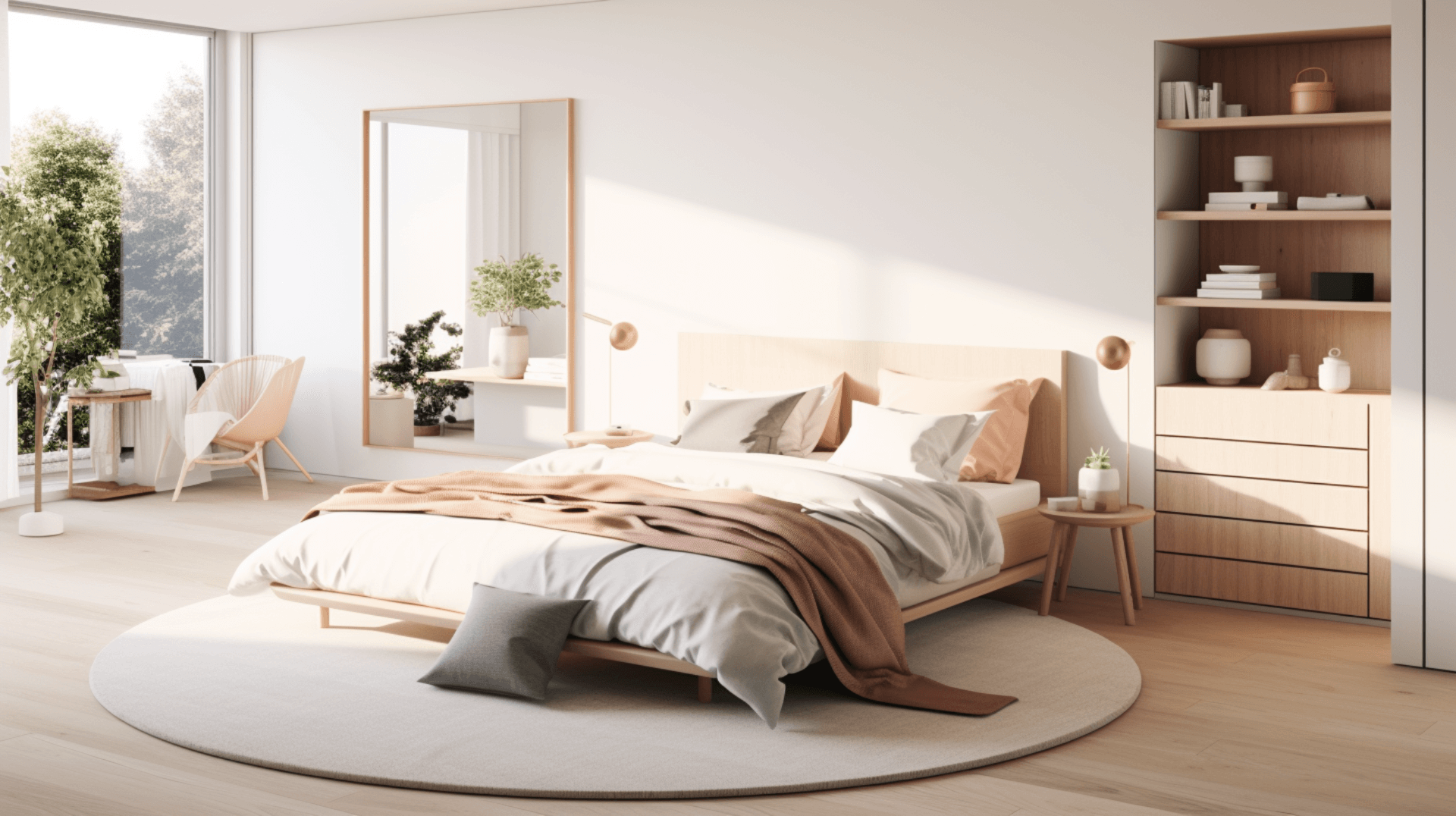
Cool blues and greens can create a serene and refreshing atmosphere in a bedroom, contributing to a sense of tranquillity and relaxation. These cool colours have a calming effect on the mind and body, making them ideal for small bedrooms.
Blues, such as sky blue or pale turquoise, evoke feelings of serenity and peace, helping to create a soothing environment for rest and sleep. Greens, like soft mint or sage green, are associated with nature and can bring a sense of harmony and balance to a space. These colours also have the ability to visually expand a small room, making it appear larger and more spacious.
By incorporating cool blues and greens into the decor, a small bedroom can feel more open and inviting, promoting a restful and rejuvenating atmosphere.
Warm and cosy Earth Tones
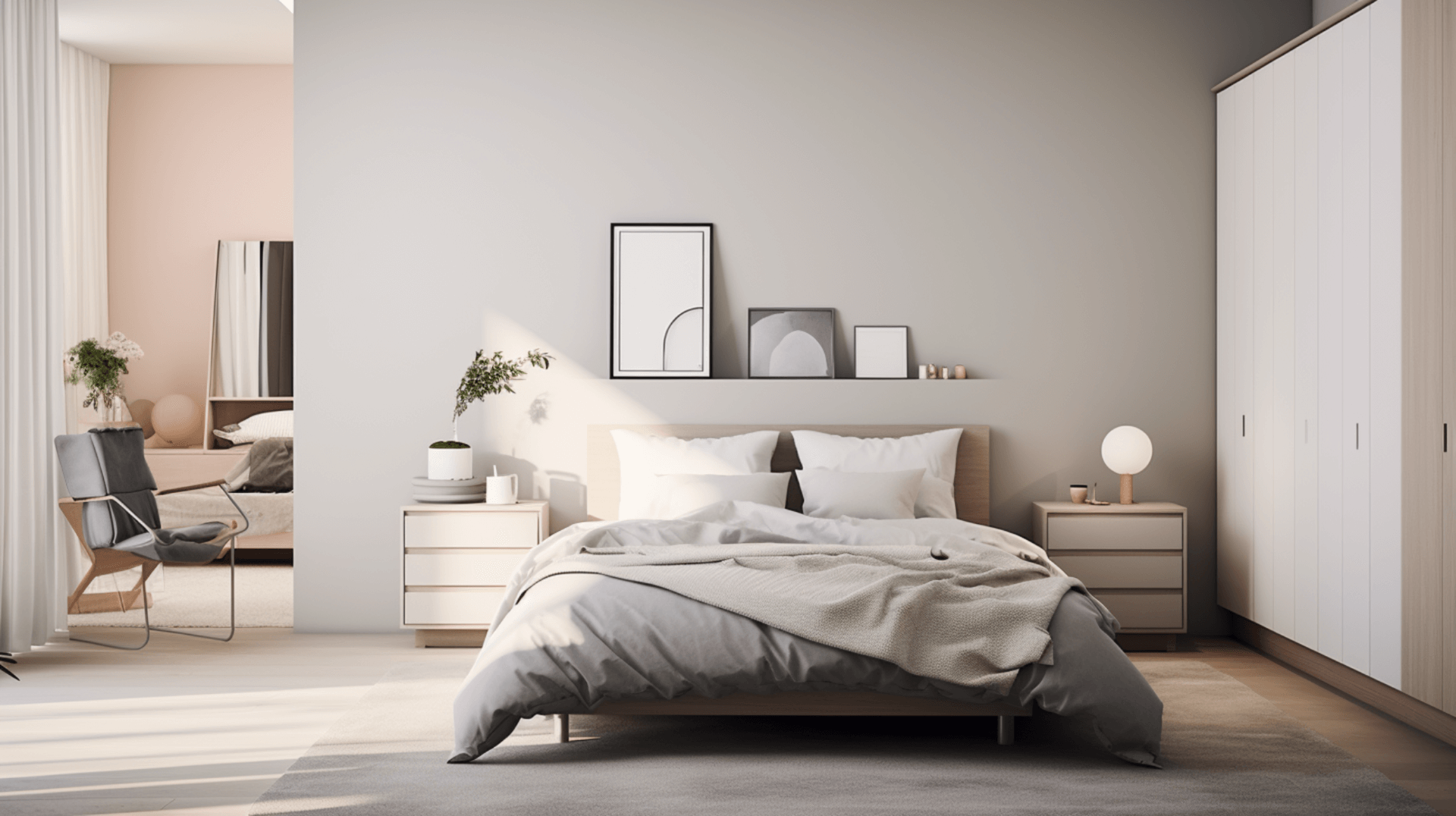
Warm and cosy earth tones can create a welcoming and intimate ambience in a bedroom, fostering a sense of comfort and relaxation. These colours are inspired by nature and can bring a sense of tranquillity to a small space.
Here are three sub-lists that explore the depth and complexity of using warm and cosy earth tones in bedroom decor:
-
Natural Brown Shades: colours like chocolate brown, caramel, and tan can add warmth and richness to the room. These earthy hues can be incorporated through furniture, bedding, or accent pieces such as rugs or curtains.
-
Earthy Greens: Shades of moss, olive, and sage can evoke a sense of serenity and bring the outdoors inside. These greens can be used on walls, bedding, or even in the form of potted plants to create a calming and soothing atmosphere.
-
Rustic Reds: Deep reds, terracotta, and burnt orange can add a touch of cosiness and create a rustic feel in the bedroom. These warm hues can be used as accent colours through pillows, throws, or artwork, adding depth and character to the space.
By carefully selecting and combining warm earth tones, a small bedroom can be transformed into a cosy sanctuary that promotes relaxation and restful sleep.
Creating Contrast with Accent colours
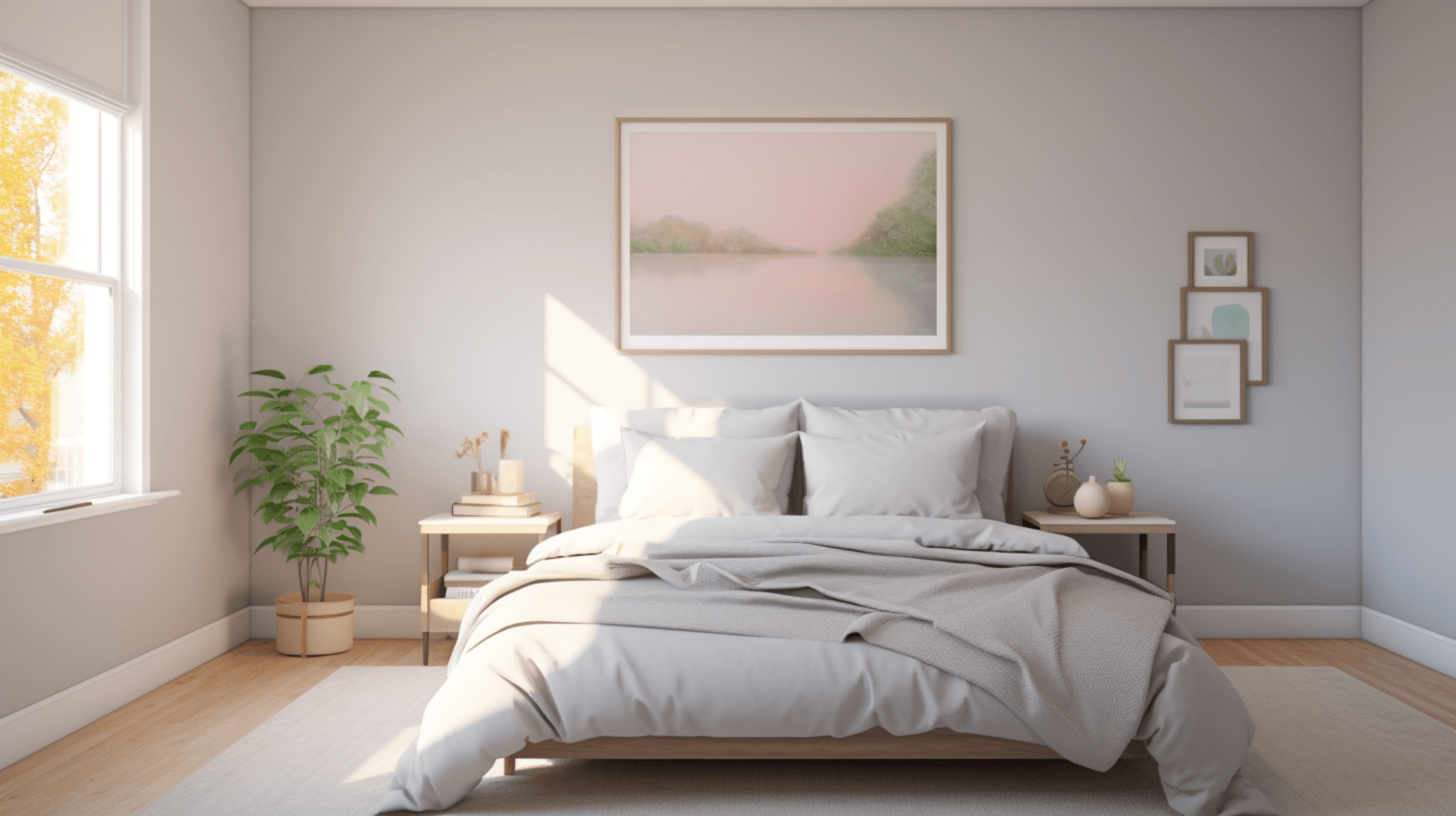
Creating contrast with carefully chosen accent colours can add depth and visual interest to a bedroom, elevating the overall aesthetic and creating a more stimulating and dynamic environment. By strategically incorporating accent colours that contrast with the main colour scheme, one can create a sense of balance and harmony in a small bedroom.
For instance, pairing a neutral colour palette with bold and vibrant accent colours can create a striking visual impact. The use of contrasting colours can also help highlight specific design elements or focal points in the room, drawing attention to architectural features or decorative accessories.
Moreover, the strategic placement of accent colours can create the illusion of more space in a small bedroom by visually expanding the boundaries. When used thoughtfully, accent colours can transform a small bedroom into a visually captivating and spacious-feeling sanctuary.
utilising Mirrors and Reflective Surfaces
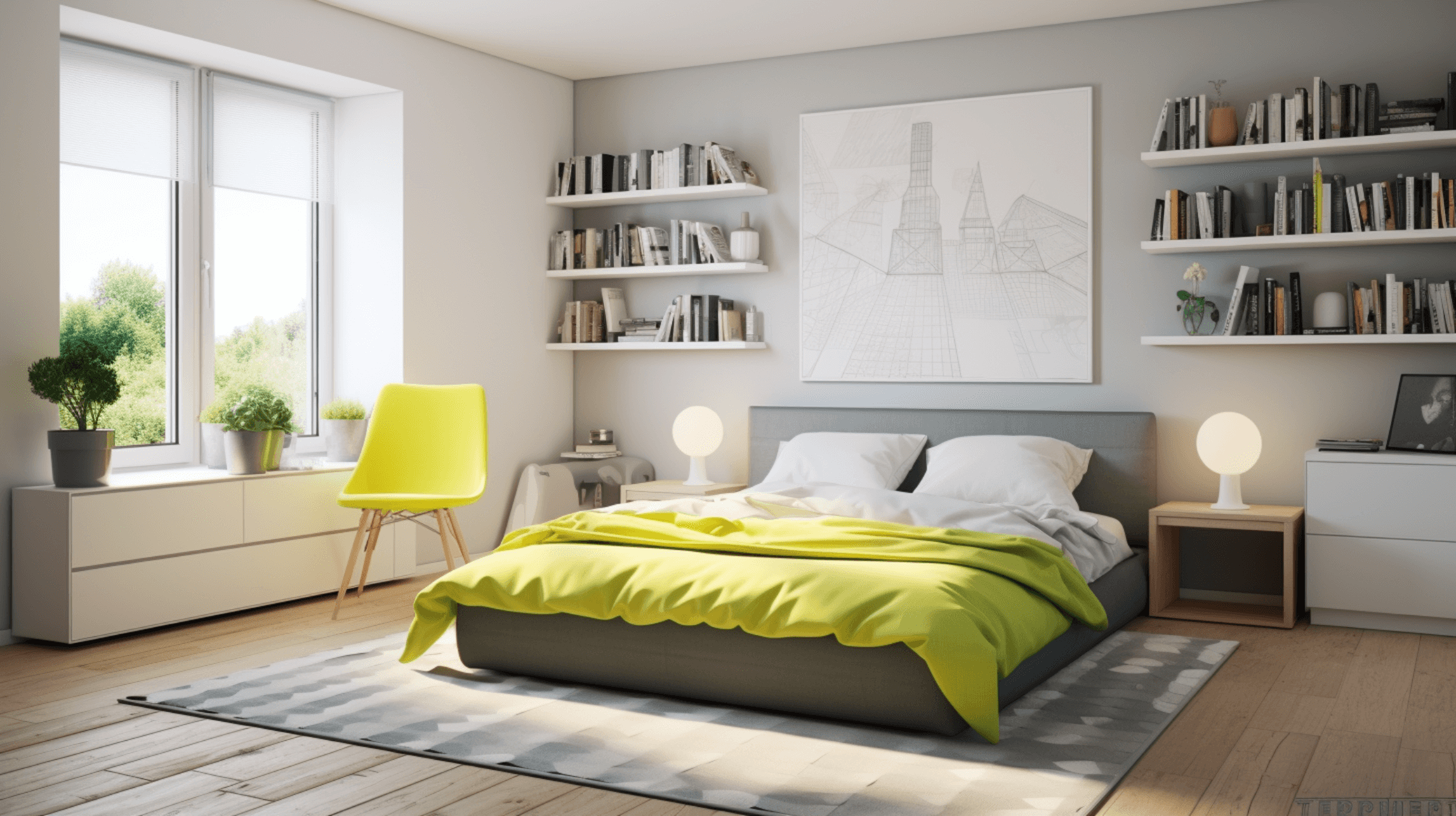
utilising mirrors and reflective surfaces in a bedroom can enhance the visual depth and dimensionality of the space, creating an illusion of expanded boundaries and adding a touch of elegance to the overall design.
Mirrors have the ability to reflect light, making a small bedroom appear brighter and more spacious. They can also create a sense of symmetry and balance, especially when strategically placed opposite a window or other focal point.
Additionally, mirrors can serve as decorative elements, adding a touch of glamour and style to the room. Reflective surfaces, such as metallic finishes or glossy textures, can further enhance the illusion of space by bouncing light around the room.
By incorporating mirrors and reflective surfaces into the design scheme, one can transform a small bedroom into a visually appealing and spacious retreat.
Optimal Lighting Techniques
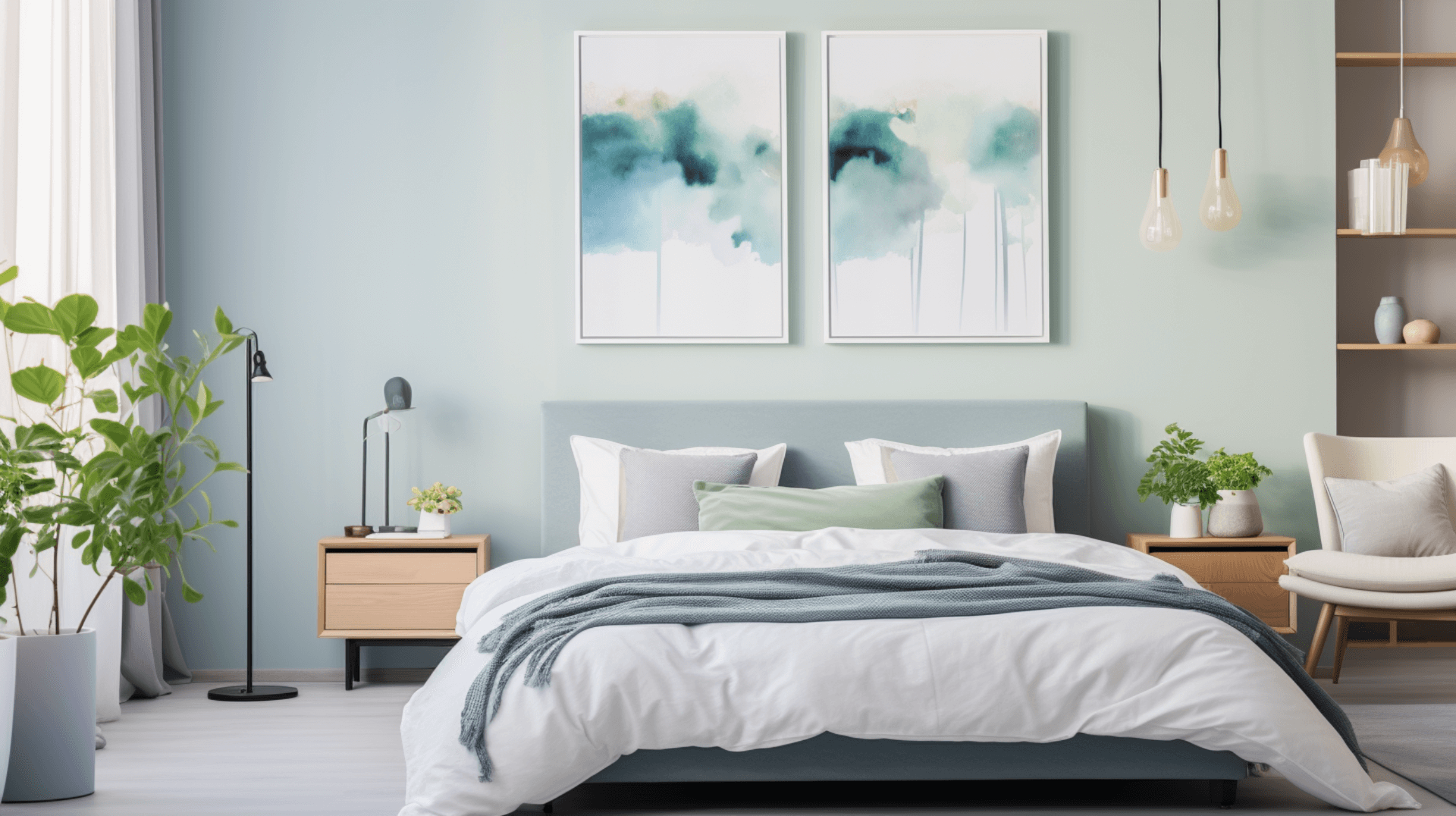
Optimal lighting techniques are crucial in achieving a well-balanced and visually pleasing atmosphere in a bedroom. Proper lighting can significantly impact the perception of space and create an illusion of a larger room.
To maximise the spacious feel in a small bedroom, it is essential to utilise various lighting techniques strategically. Firstly, natural light should be maximised by using sheer curtains or blinds that allow ample sunlight to enter the room.
Additionally, incorporating artificial lighting sources, such as pendant lights or wall sconces, can help to distribute light evenly throughout the space. Task lighting, such as bedside lamps or reading lights, should also be considered to provide focused illumination in specific areas.
By carefully selecting and placing lighting fixtures, a small bedroom can be transformed into a visually expansive and inviting space.
Strategic Furniture Placement
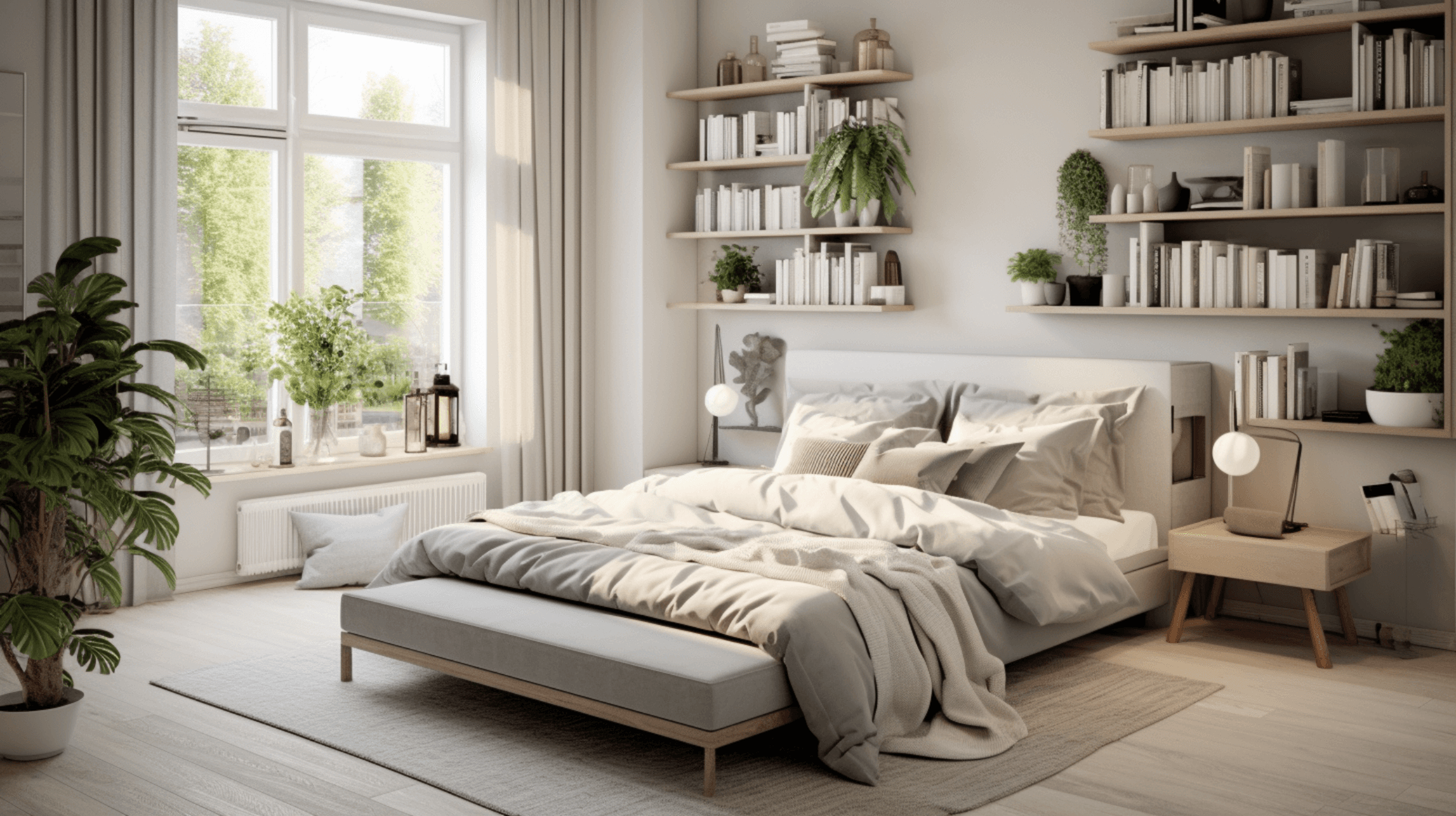
Strategically arranging furniture can significantly impact the overall layout and functionality of a bedroom space. By carefully considering the placement of each piece, one can create an illusion of spaciousness in a small bedroom.
To achieve this, it is important to prioritise furniture that serves multiple purposes. For instance, opting for a storage bed or a bedside table with built-in drawers can help maximise storage space while minimising clutter. Additionally, choosing furniture with a slim profile can create a sense of openness in the room.
Another aspect to consider is the arrangement of furniture in relation to natural light sources. Placing the bed near a window can not only provide a pleasant view but also make the room feel brighter and more airy. On the other hand, avoiding blocking the flow of natural light by positioning larger furniture pieces away from windows can contribute to a more spacious feel.
Strategic furniture placement in a small bedroom involves selecting versatile pieces and considering their arrangement in relation to natural light sources. By following these guidelines, one can optimise the functionality and create a spacious atmosphere in a small bedroom.
Decluttering and Minimalism
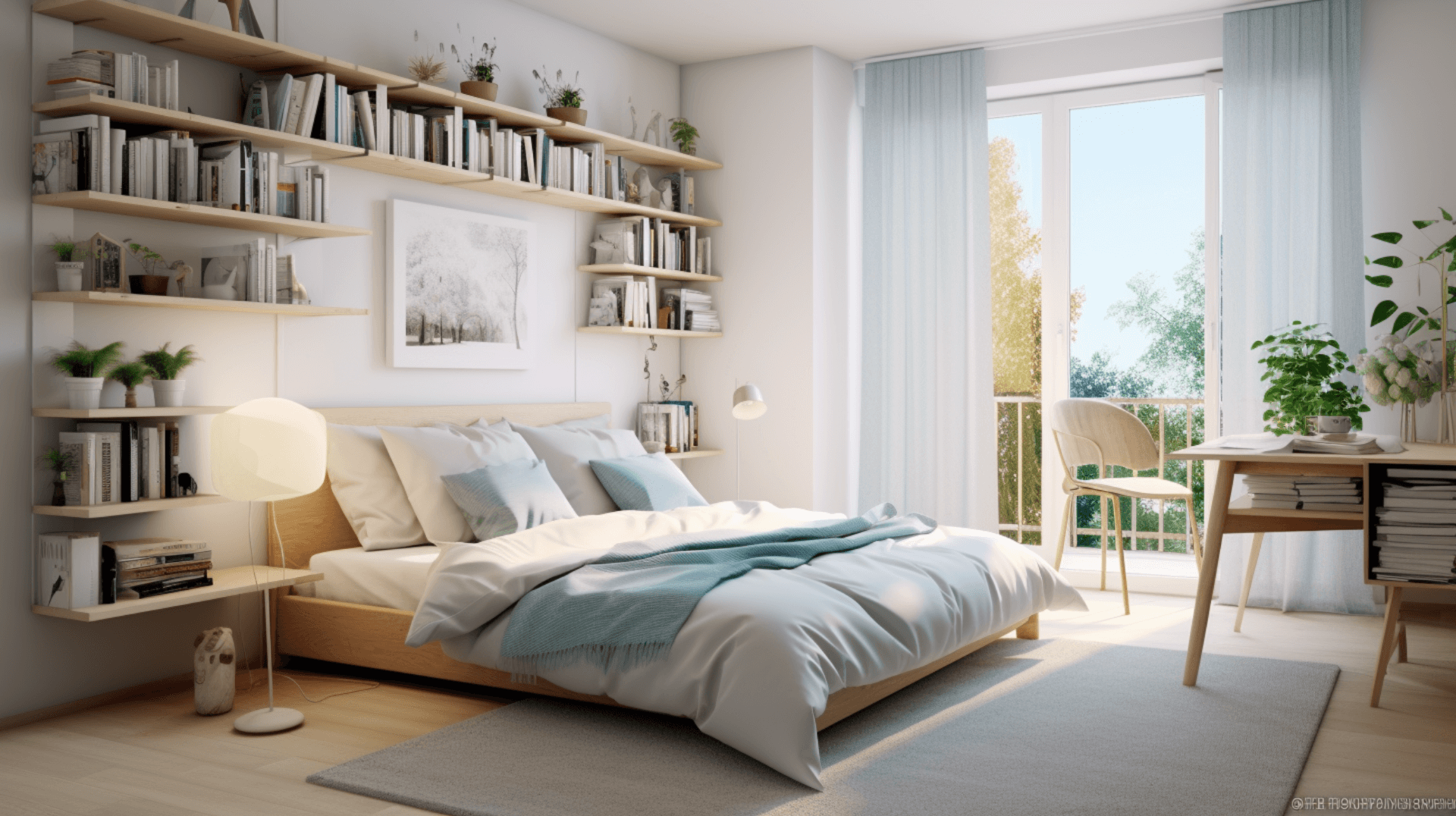
Transitioning from the strategic placement of furniture, the next crucial step in small bedroom decorating involves decluttering and embracing minimalism.
Decluttering is the process of removing unnecessary items from a space, allowing for a cleaner and more organised environment. By minimising the number of objects in a small bedroom, one can create a sense of spaciousness and tranquillity.
Embracing minimalism goes beyond decluttering and involves adopting a mindset of simplicity and functionality. This approach encourages individuals to carefully curate their belongings, keeping only what is essential and meaningful. By eliminating excess decor and unnecessary furniture, the focus can be redirected towards maximising the available space and enhancing the overall aesthetic appeal.
Additionally, minimalism fosters a sense of calm and promotes a restful atmosphere, particularly important in small bedrooms where relaxation and rejuvenation are paramount.
maximising Storage Solutions
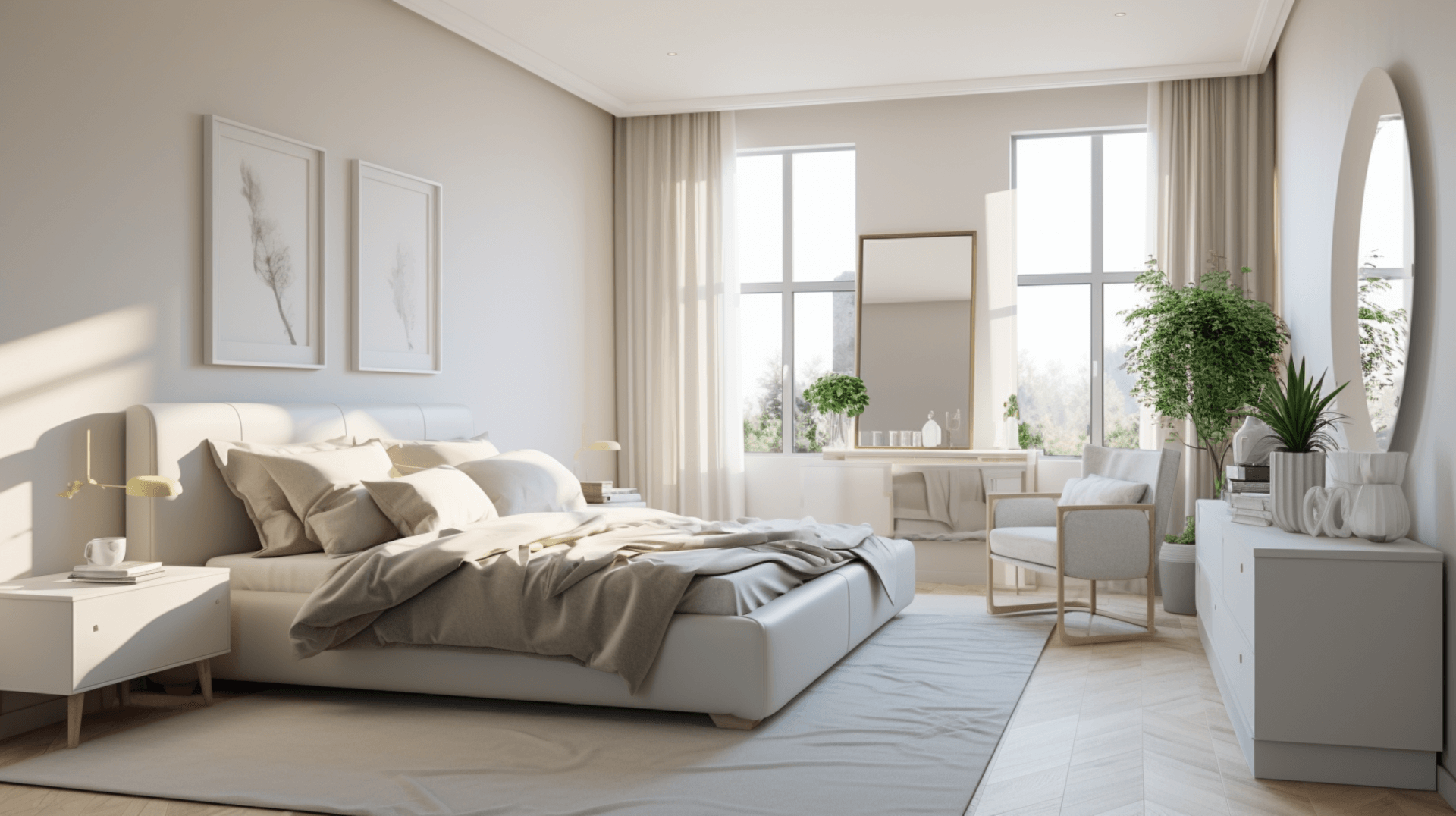
One effective approach to maximise storage solutions in a limited space involves utilising multifunctional furniture pieces that serve multiple purposes while also providing storage options. These versatile pieces not only save space but also add functionality to a small bedroom.
For example, a bed with built-in storage drawers underneath can serve as a sleeping area while also providing ample space to store clothing or other items. Additionally, a desk that doubles as a vanity or a nightstand with drawers can offer storage options without taking up extra space.
By incorporating these multifunctional furniture pieces, individuals can make the most of their small bedroom while keeping it organised and clutter-free. This approach to storage solutions allows for a spacious feel and helps create a visually appealing and functional space in a limited area.
Incorporating Vertical Space
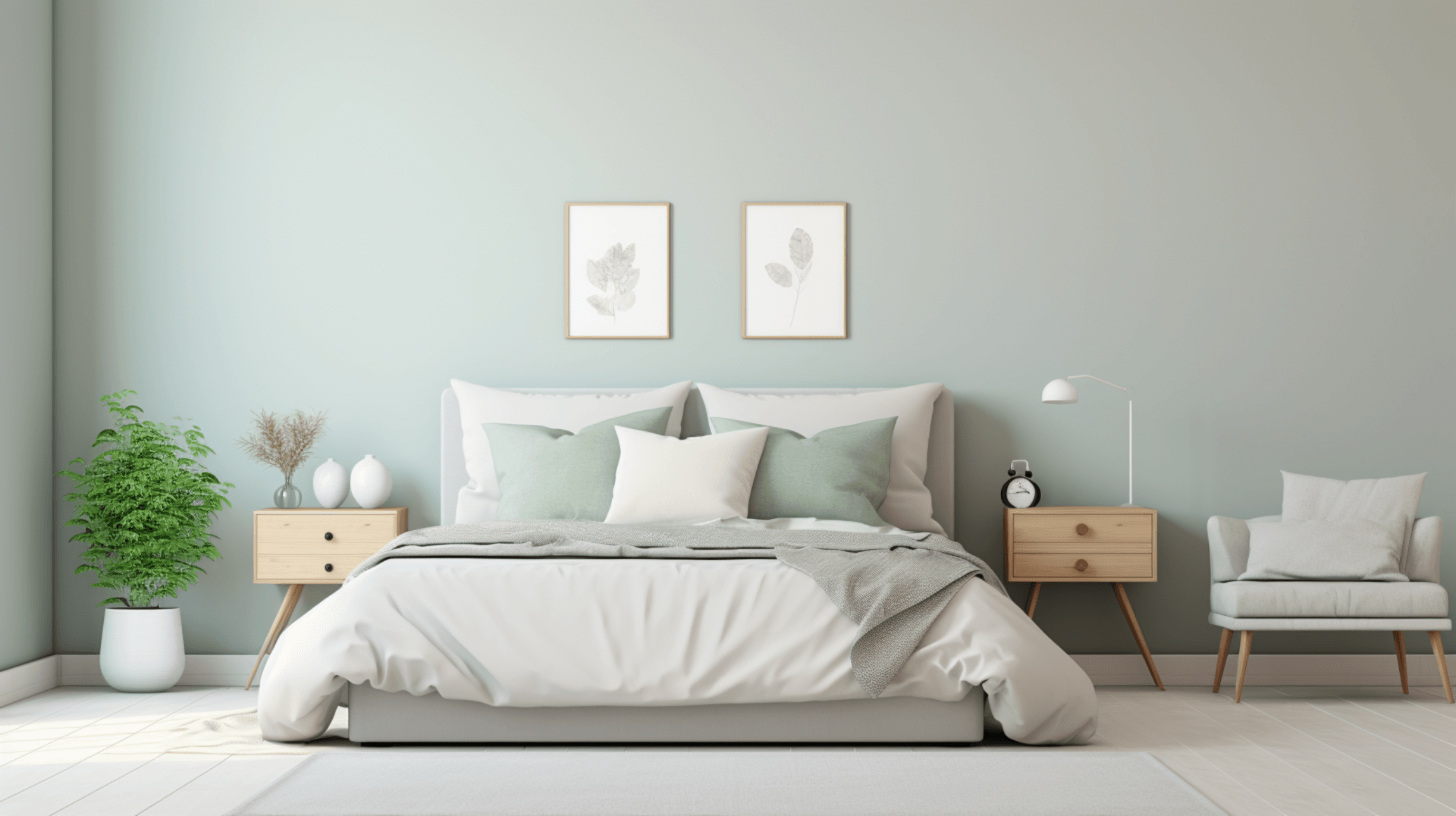
utilising the vertical wall space can be an effective method to maximise storage options in a limited area. In small bedrooms, where floor space is often limited, incorporating vertical space can provide valuable storage solutions.
By utilising wall-mounted shelves, floating shelves, or hanging organisers, one can optimise the available space and create a more organised and spacious feel. The vertical wall space can be used to store books, display decorative items, or hang clothing and accessories.
Additionally, utilising the vertical space allows for easy accessibility to frequently used items without cluttering the limited floor space. It is important to carefully plan the placement of these storage solutions to ensure they are functional and aesthetically pleasing.
With thoughtful utilisation of vertical space, small bedrooms can be transformed into well-organised and visually appealing spaces.
Creating Illusions with Patterns
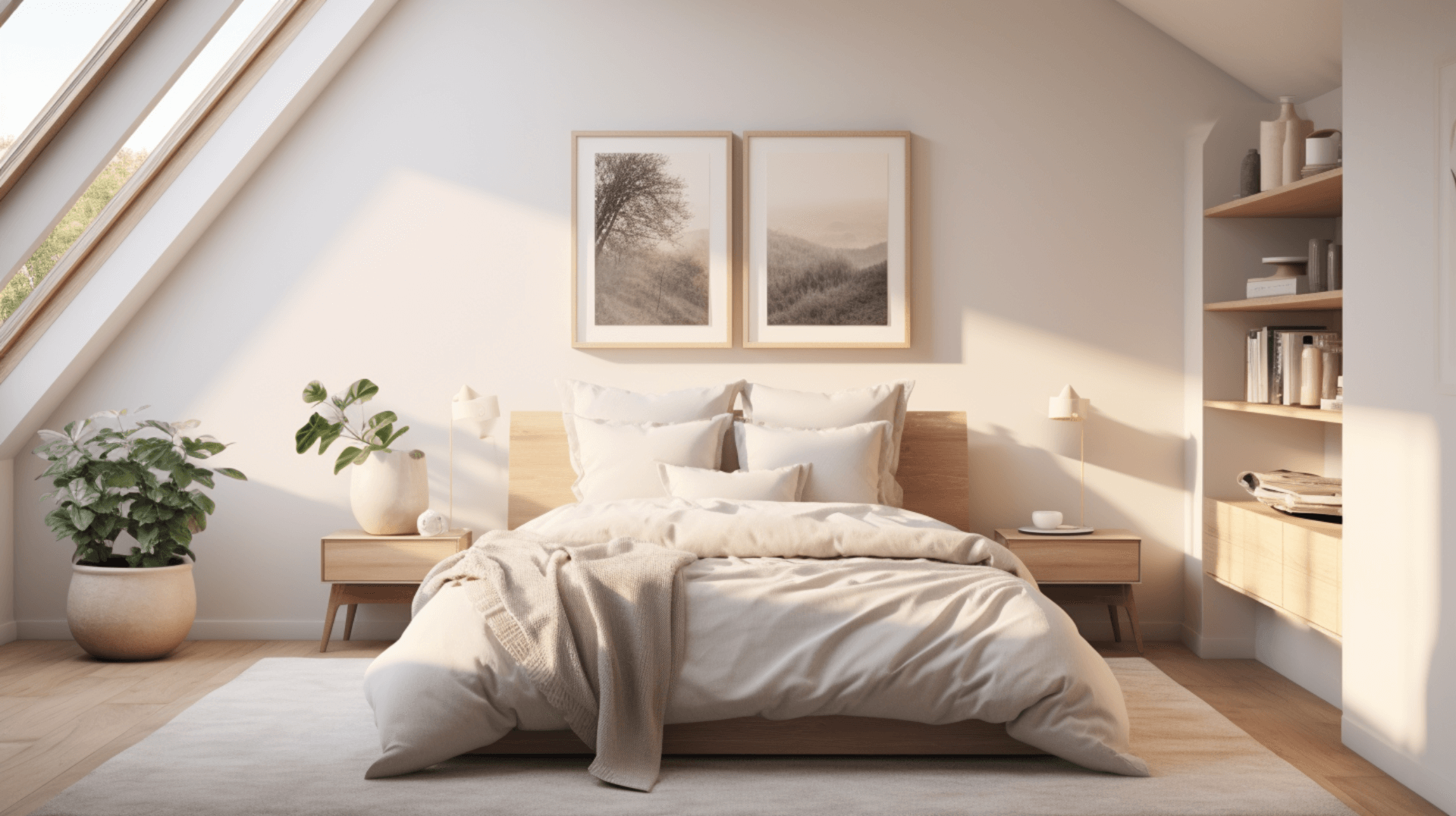
By incorporating patterns strategically, the visual perception of a room can be altered, creating an illusion of depth and dimension. Patterns have the ability to trick the eye and make a space appear larger than it actually is. When used effectively, they can draw attention away from the small size of a room and instead focus on the visual interest provided by the patterns.
One effective way to create an illusion of spaciousness is by using vertical patterns. Vertical stripes, for example, can make the walls appear taller, giving the room a sense of height.
Additionally, patterns that feature a sense of movement, such as diagonal lines or chevron prints, can add a dynamic element to the room, making it feel more open and expansive.
It is important to choose patterns that are not too overwhelming or busy, as this can have the opposite effect and make the space feel cluttered. Instead, opt for subtle patterns that add visual interest without overpowering the room.
Using Textures to Add Depth
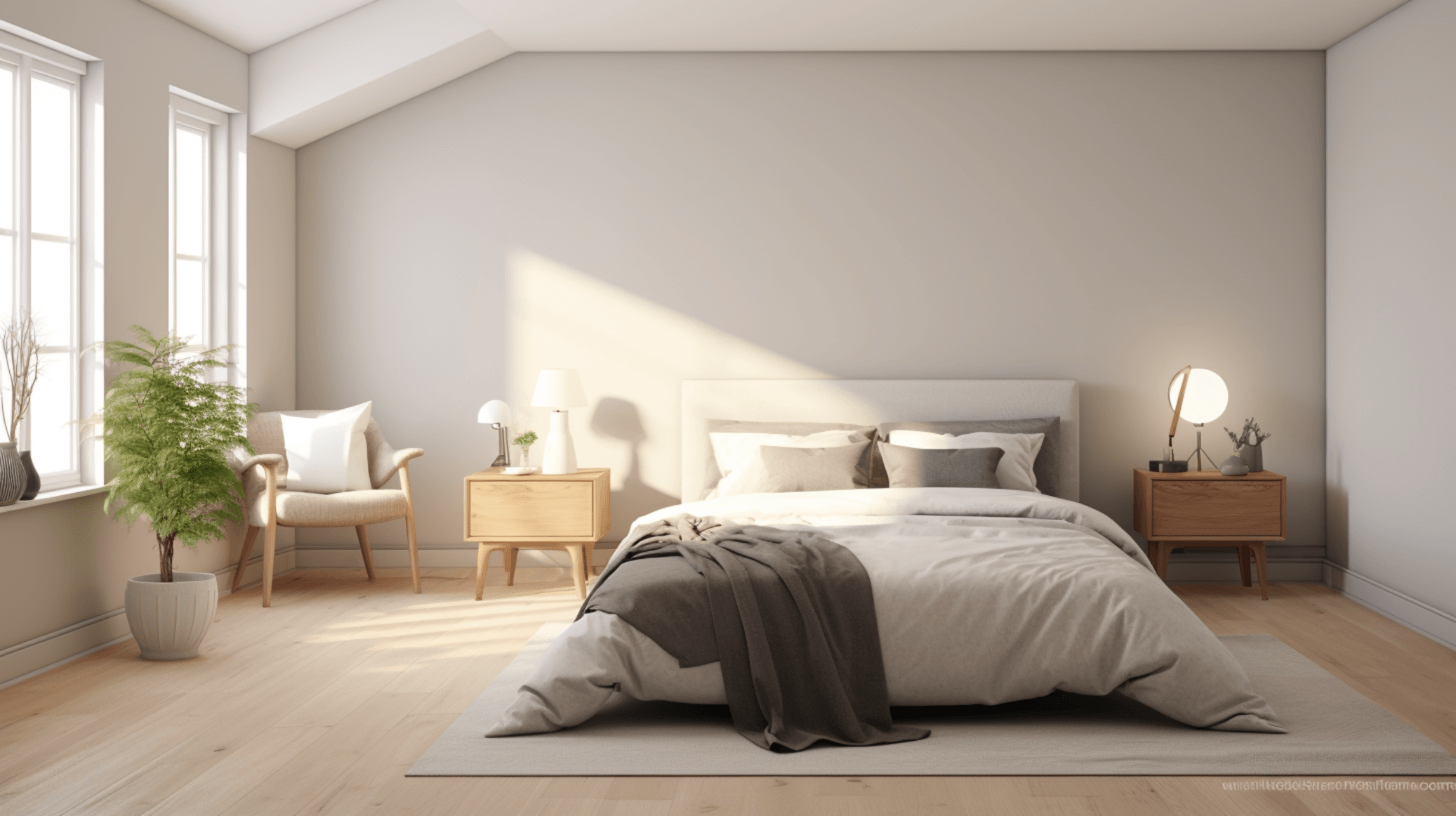
To add depth to a room, incorporating various textures can be an effective technique. By introducing different textures, such as rough, smooth, or tactile surfaces, one can create visual interest and a sense of dimension.
Textures can be applied to walls, furniture, or accessories to achieve this effect. For example, a rough brick accent wall can contrast with a smooth, glossy bed frame, creating a visually stimulating combination. Additionally, using textiles with different textures, such as a plush rug or velvet throw pillows, can evoke a sense of cosiness and comfort.
However, it is important to maintain a cohesive aesthetic by choosing textures that complement each other and the overall design scheme. By strategically incorporating textures, one can enhance the depth and visual appeal of a small bedroom.
personalising Your Space
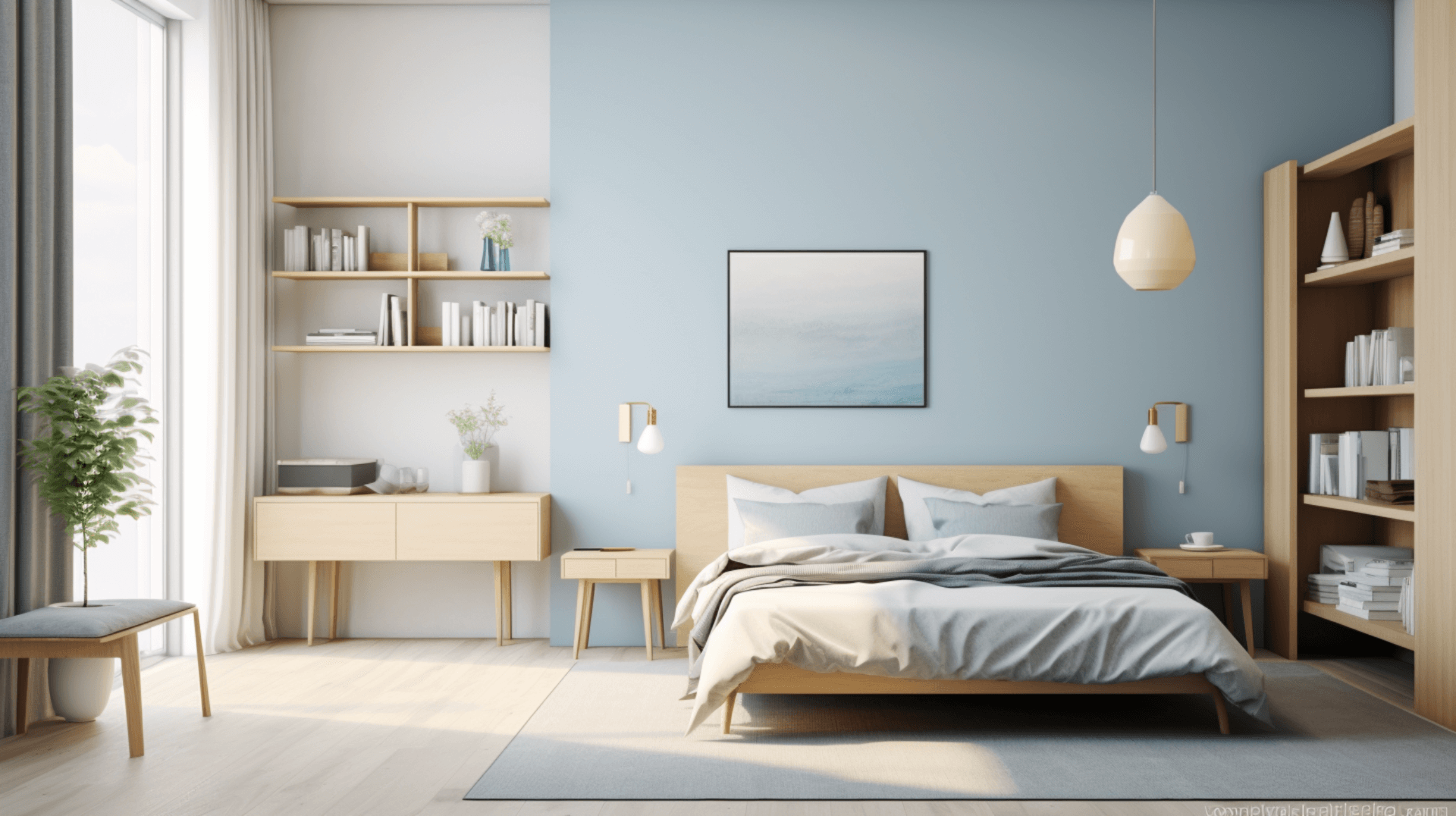
In addition to utilising textures to add depth, another effective strategy for small bedroom decorating is personalising your space.
Personalization allows you to infuse your own unique style and taste into the design, creating a sense of identity and comfort within the limited area.
One way to achieve this is by incorporating meaningful objects or artwork that reflect your interests and personality. These personal touches not only make the space feel more inviting but also serve as conversation starters or sources of inspiration.
Furthermore, consider selecting furniture and decor items that align with your preferences and lifestyle. This could involve choosing pieces with clean lines and multifunctional features to maximise the functionality of the room.
By personalising your small bedroom, you can transform it into a space that truly reflects your individuality while maintaining a spacious feel.
Conclusion
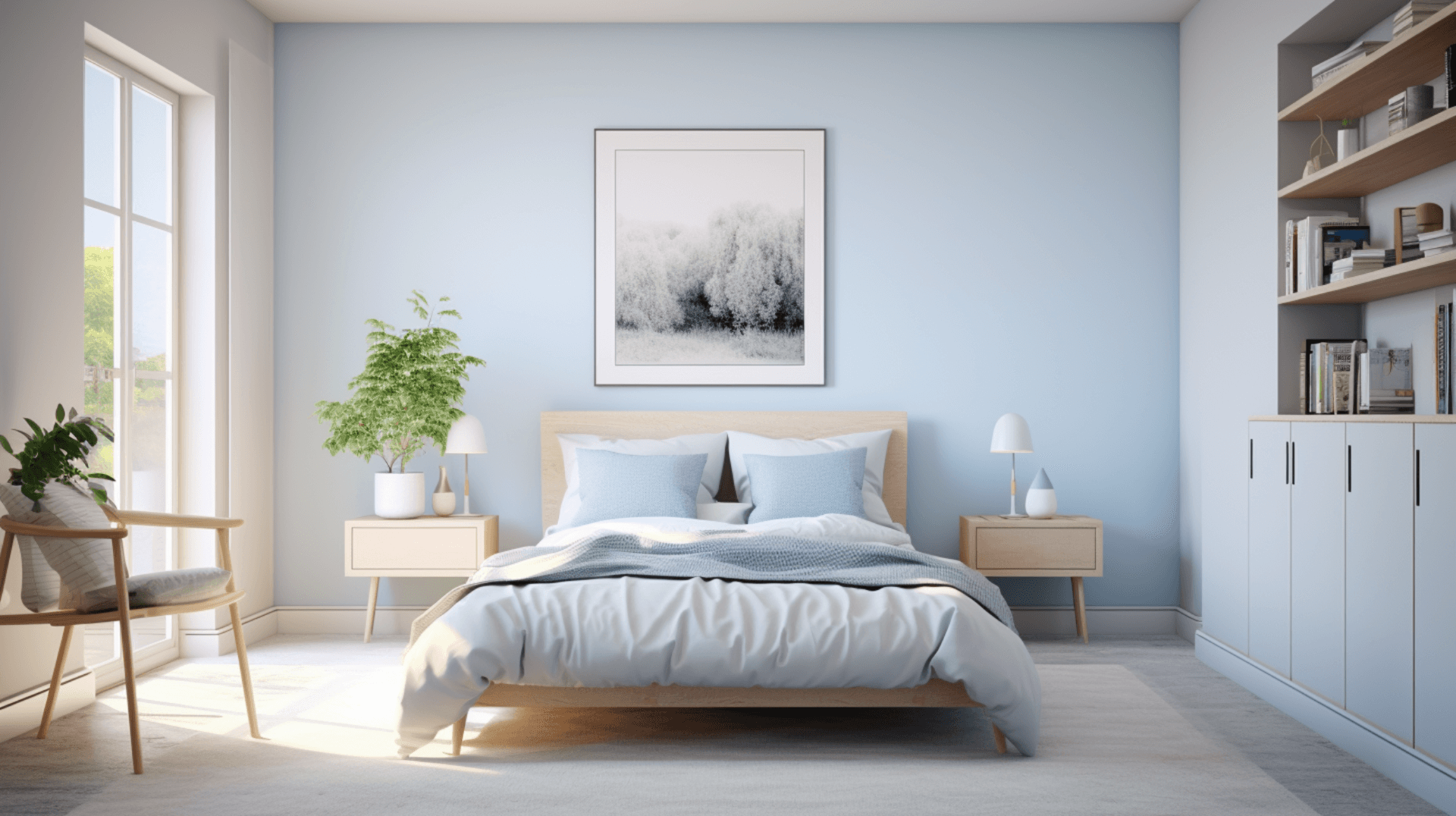
In conclusion, when decorating a small bedroom, it is important to consider the use of colours to create a spacious feel. By understanding colour psychology and choosing the right colour palette, one can achieve a visually larger space.
Light and neutral shades, cool blues and greens, as well as warm and cosy earth tones, can all contribute to a sense of openness.
Incorporating vertical space, creating illusions with patterns, using textures to add depth, and personalising the space are additional strategies that can enhance the overall ambiance of a small bedroom.


